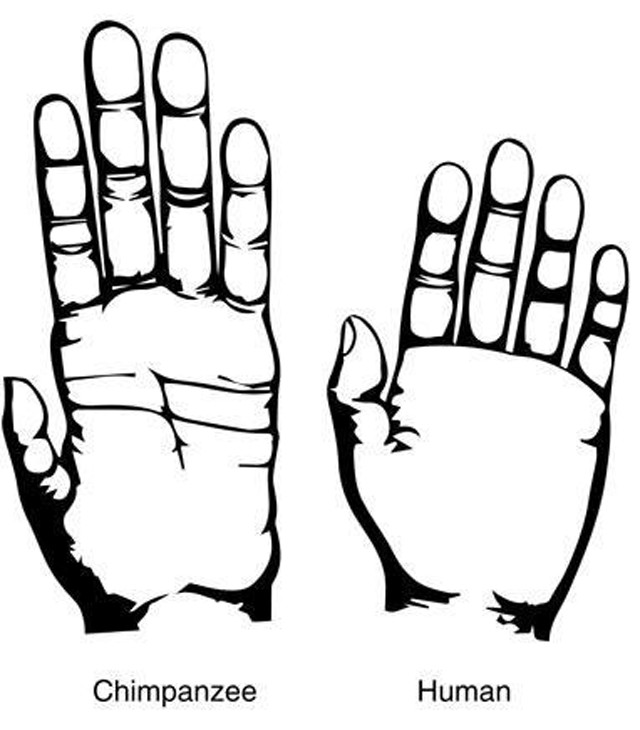
by Timothy Oleson Thursday, November 12, 2015

With longer fingers, chimpanzees have lower thumb-to-finger-length ratios than humans. Credit: Almécija et al., Nature Communications, 2015, CC BY 4.0.
Compared to chimpanzees, our recent evolutionary cousins, humans have long thumbs relative to our fingers. This trait has endowed our ancestors and us with a particular talent for grasping and working with tools, which likely contributed to our evolutionary success over the last several million years since splitting off from the last common ancestor (LCA) shared by the two groups. But rather than humans having the more evolved hand — a prevailing hypothesis since the late 20th century — a new study suggests that chimps’ hands, with lower thumb-to-finger-length ratios, have changed considerably more.
Sergio Almécija of Stony Brook University in New York and colleagues made detailed measurements of hand proportions among humans, apes and other living primates, as well as of fossil species like the primitive African ape Proconsul heseloni and the early human ancestors Ardipithecus ramidus and Australopithecus sediba, noting a wide range of hand dimensions among modern hominoids. Combining the data with phylogenetic models, they pieced together a map of evolutionary change in primate hands. The results, reported in Nature Communications, show that the finger and thumb lengths of human hands have actually changed little since the human-chimp LCA, countering the notions that the LCA’s hands were more chimp-like and that higher thumb-to-finger ratios only emerged in later human ancestors.
The researchers also identified examples of convergent evolution — in which similar traits develop independently in different lineages — including finger elongation in both chimpanzees and orangutans, and high thumb-to-finger ratios among human ancestors and “other highly dexterous anthropoids such as capuchins and gelada baboons.”
© 2008-2021. All rights reserved. Any copying, redistribution or retransmission of any of the contents of this service without the expressed written permission of the American Geosciences Institute is expressly prohibited. Click here for all copyright requests.